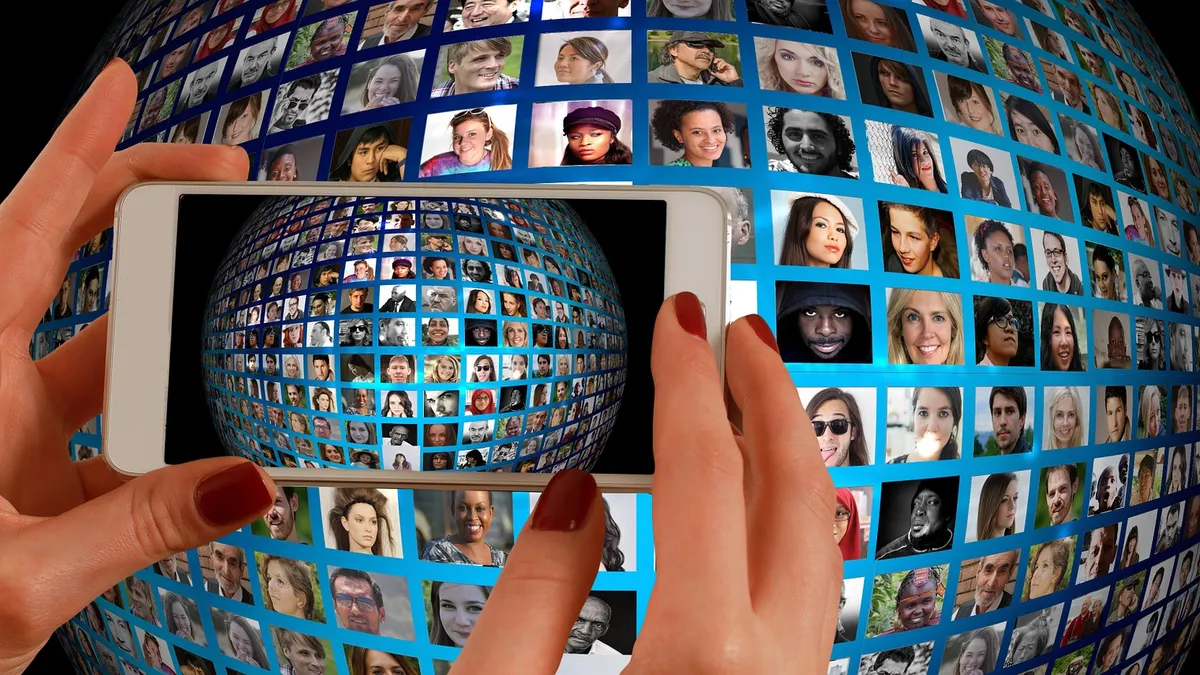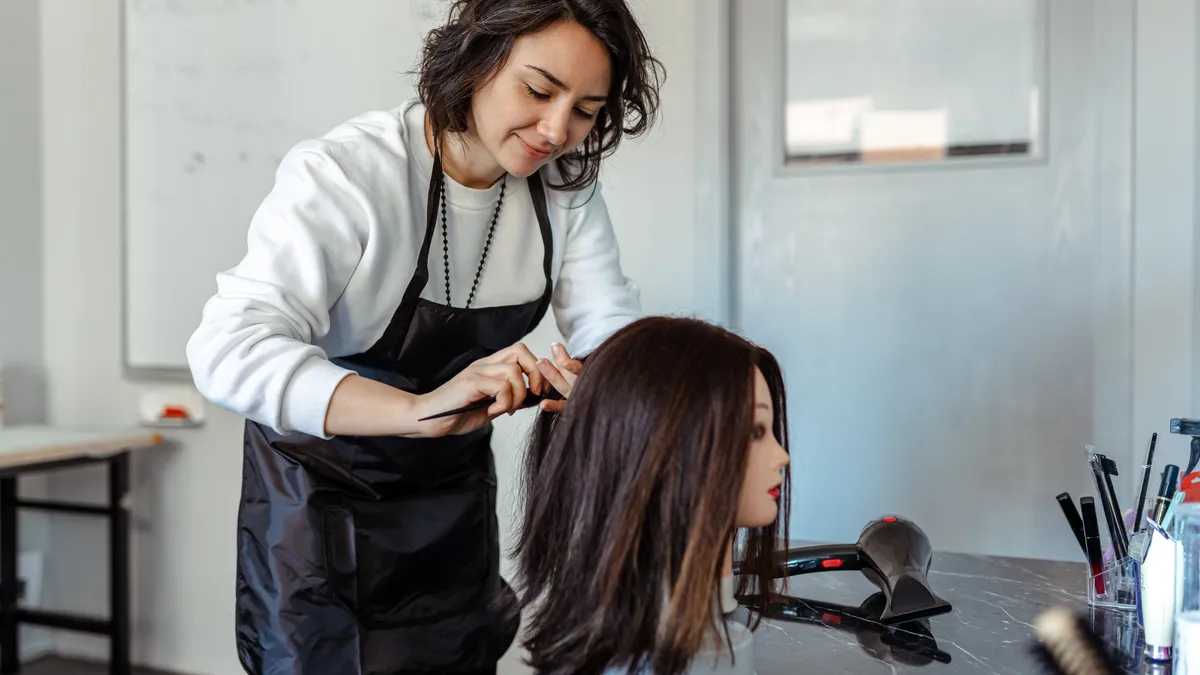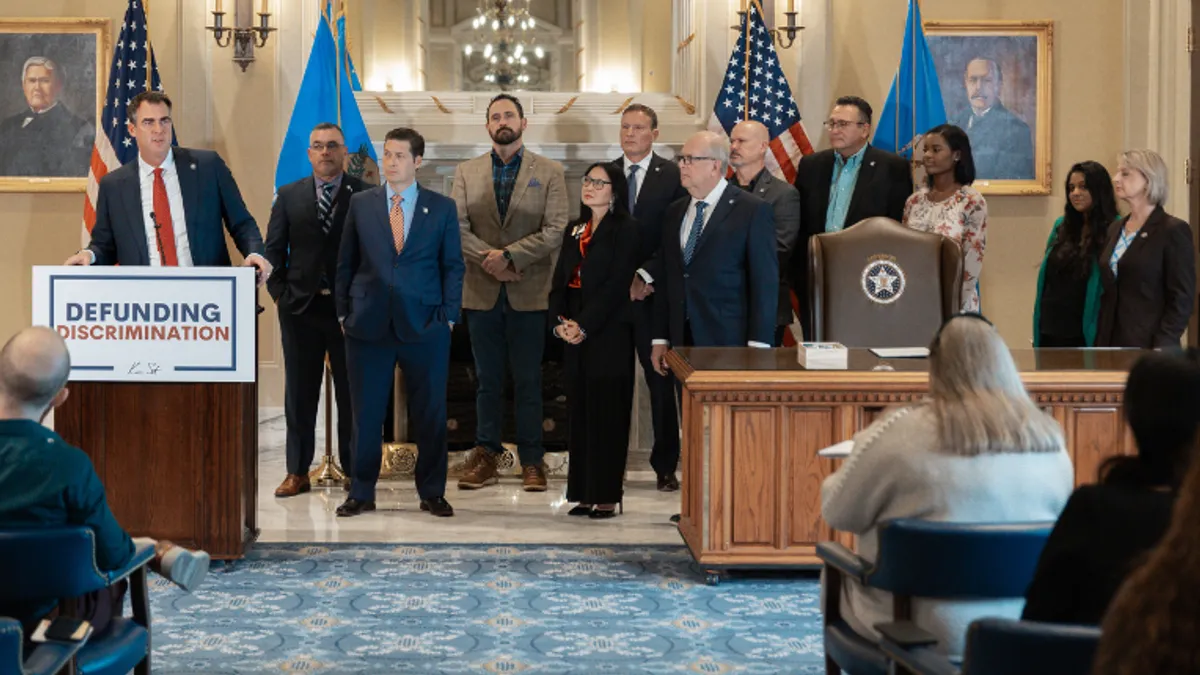Editor's note: This piece was written by Richard Greggory Johnson III, a professor and Fulbright Public Policy Scholar in the School of Management at the University of San Francisco.
More than six decades have passed since Chief Justice Earl Warren penned prescient words that continue to ring true today when he observed that education “is the very foundation of good citizenship.”
Warren wrote those words when he delivered the opinion of the unanimous U.S. Supreme Court in Brown v. Board of Education, the landmark case that found that “separate but equal” schools not only were unconstitutional but also had a “detrimental effect” on the well-being of black children.
While much has changed since those days of legalized segregation, the promise of educational equality in an increasingly diverse country is far from fulfilled. The recent death of Linda Brown — the schoolgirl from Topeka, Kansas, who was at the heart of the case — prompts reflection on the state of diversity in the nation’s educational system, from K-12 through the college years that follow.
Warren laid out a standard that we still strive to attain. He noted that “a sense of inferiority affects the motivation of a child to learn,” but it also can “affect [children’s] hearts and minds in a way unlikely ever to be undone.” When it comes to increasing educational diversity, Warren’s words hold just as true today as when he issued the court’s ruling in 1954.
Racial and Gender Imbalances Persist
From kindergarten all the way through college, the overwhelming majority of teachers continue to be white, even though the majority of students don’t. Let’s break down some numbers drawn from a 2016 report by the U.S. Department of Education:
-
Of the public elementary and secondary educator workforce, 82% is white.
-
The percentage of public school teachers of color has increased slightly from 13% in the 1987-88 school year to 18% in 2011-12. Within that framework, however, the percentage of black teachers has declined.
-
At the same time, public K-12 students are becoming more diverse. In fall 2014, public school students became “majority minority” when the percentage of non-Hispanic white students dipped below 50%, surpassed by Latino, black, Asian, and other minority students. Students of color are expected to continue increasing, reaching 56% of the student population by 2024.
The situation isn’t any better at the college level, where teachers also continue to be mostly white and where student populations are typically more diverse than the faculty. I’ve heard about it firsthand from students in my own courses at the University of San Francisco. USF graduate students have told me that in more than two years on campus — in an ethnically diverse city, mind you — they had never had a teacher of color before me.
In today’s society, diversity means more than race and gender. While much research focuses on these two topics, it’s equally important for students to see themselves represented and reflected in other areas, such as their disability status, religious affiliation, sexual orientation, and socioeconomic status.
Build a Better Pipeline and Create Mentorship Programs
Given this environment, it’s essential to improve diversity among educators at all levels. Because the pathway through the pipeline is complex, there are many opportunities along the way for diversity to diminish. We can’t let that continue to happen.
Former Secretary of Education John B. King Jr. summed up the situation in an interview with USA Today. “There are gaps at every step of the pipeline,” explained King, who served during the Obama administration’s final year. “There are gaps in graduation rates. There are gaps in students choosing education as their major. There are gaps in students graduating from college. There are gaps in entering the teacher workforce, and then gaps in retention. So it’s really at every stage. And it is a big challenge.”
When I worked at the University of Vermont, I often heard the refrain that “we can’t hire faculty of color because they don’t want to come live here.” At USF, I can walk down the street and easily find individuals of color with the necessary credentials, but the problem still persists. Clearly, it will take thoughtful people applying creative methods that result in the changes necessary to bring diversity into the educational pipeline.
For instance, if there aren’t students of color coming out of doctoral programs with the intention of seeking jobs in the educational system, that’s a problem. In my own field, the doctoral programs across country regularly attract students of color. The key becomes guiding those students into the pipeline that leads to an academic position.
The pipeline for LGBT students, meanwhile, is almost nonexistent. Despite the progress that society has made, we’re not that far removed from the days when a teacher could be fired for being LGBT. As more students continue to come out, and we get farther down the road of progress, it will be easier to be out in an educational setting. And that shift in mindset should lead to more LGBT students following the pipeline into teaching positions.
When it comes to social class, it can be particularly difficult to succeed in an educational setting, let alone make it into the pipeline that leads to a teaching career. Kenneth Oldfield and I published a book in 2005 that compiled the experiences of professors who came from LGBT and working-class backgrounds. The issues we found have only continued to worsen as the class divide in this country has continued to widen.
In higher education specifically, an overwhelming number of individuals come from a privileged background, while very few come from a working-class background, regardless of race and other characteristics. Quite simply, we aren’t making sure the playing field is level enough that everyone has an opportunity to advance.
Additionally, we must make sure that we are providing students with an effective mentoring program. Students of color and women should have the opportunity to be coupled with individuals that understand the value of a diverse workforce. Effective mentoring can be done formally or informally and can start as early as K through 12 and continue even into the professional workplace. It should also be noted that effective mentoring does not have to be individuals of the same race, gender, sexuality etc., but the mentoring relationship has to be built on trust and be authentic. An effective mentoring program, whether one on one or in a group setting (ie. Alpha Phi Alpha Fraternity Inc. "Go to High School- Go to College" national mentoring program) should have the financial resources to execute a mentoring program that meets its objectives, outcomes and creates a lasting a positive experience for both the mentee and the mentor.
Social Movements Can Impact Public Policy
People have grown weary of this situation, and they’ve found the resolve to take to the streets in protest. Social movements work for change, and we’re seeing that happen. The #MeToo and Black Lives Matter movements will directly influence how social issues are addressed and who represents us in elected office. I believe in the power of protest. But I also believe it will take all of us to effect change. You don’t have to belong to an affected community to make a difference.

















